
Cat6 Cable Connection Diagram Select The Right Cable Presonus Discover the uses of
For more information on the different naming conventions of shielded cables, check out our guide to Shielded and Unshielded wiring. Advantages of UTP Cables: Unshielded Twisted Pair. UTP cables are typically cheaper than their shielded counterparts, making them a great solution to your networking needs if you're working within a tight budget.

utp cable cat6 specification Wiring Diagram and Schematics
This article covers the commonly known Unshielded Twisted Pair (UTP) cable and shows how many pairs the UTP Cat5, Cat5e, Cat6 & Cat7 cables consists of, the colour coding they follow, the different wiring standard that exist ( T-568A & T-568B) plus the pin number designations for both standards.

Cat6 Utp Wiring Diagram
An Ethernet cable can be broken down into two main parts: a UTP cable and an RJ45 header connector. UTP (unshielded twisted pair) cables come in several variants, including Cat6, Cat5e, and Cat5. Cat6 cables have a bandwidth of 10 Gbps at 250 MHz, while Cat5e can only reach a gigabit per second, enabling Cat6 cables to carry more data.

UTP 25 Pair Cable Color Coding PDF Networking Standards Engineering
UTP cable is a 100 ohm copper cable that consists of 2 to 1800 unshielded twisted pairs surrounded by an outer jacket. They have no metallic shield. This makes the cable small in diameter but unprotected against electrical interference. The twist helps to improve its immunity to electrical noise and EMI. UTP CABLE APPLICATIONS
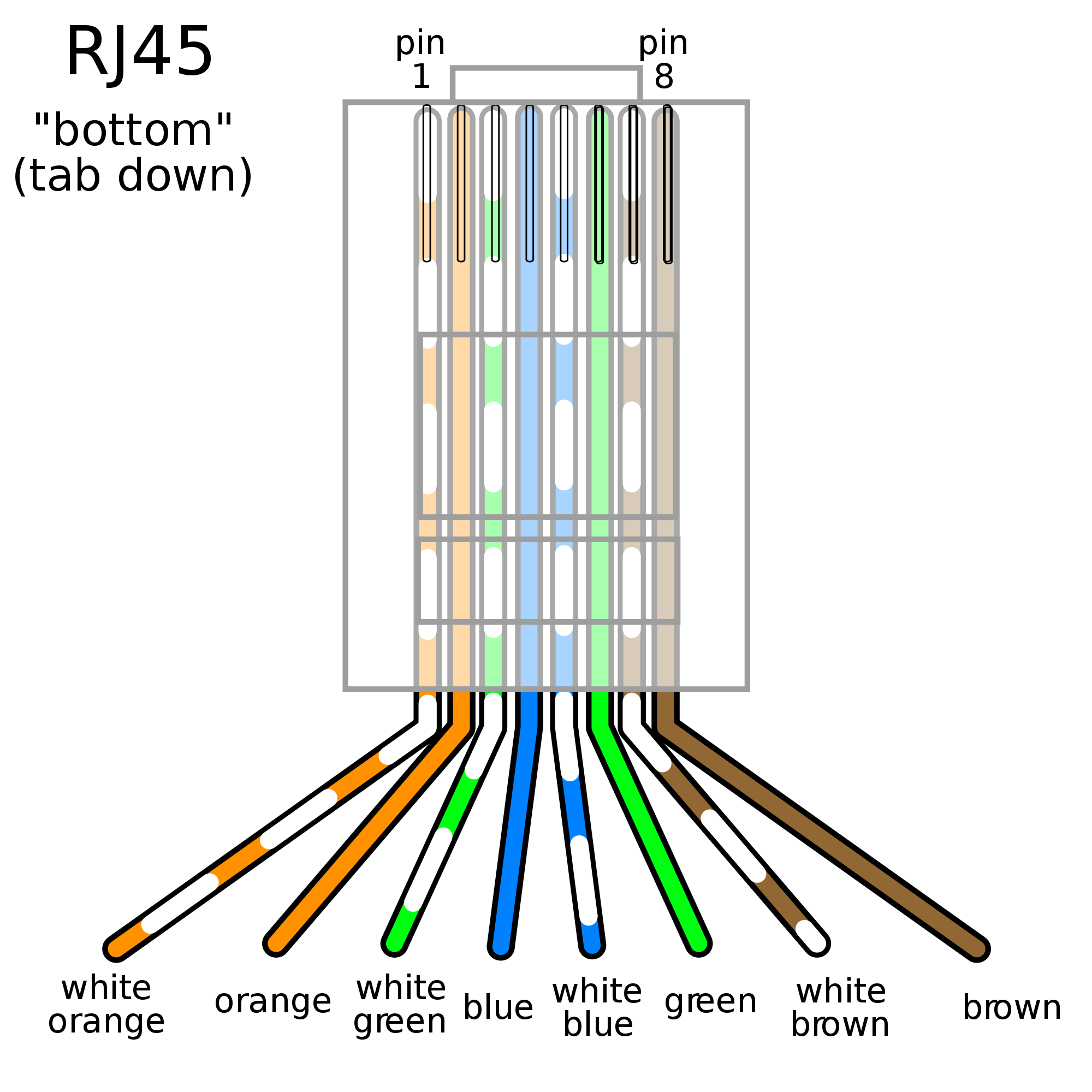
Gigabit Cable Wiring Diagram
Unshielded Twisted Pair (UTP) cable is most certainly by far the most popular cable around the world. UTP cable is used not only for networking but also for the traditional telephone (UTP-Cat 1).There are seven different types of UTP categories and, depending on what you want to achieve, you would need the appropriate type of cable.UTP-CAT5e is the most popular UTP cable which came to replace.
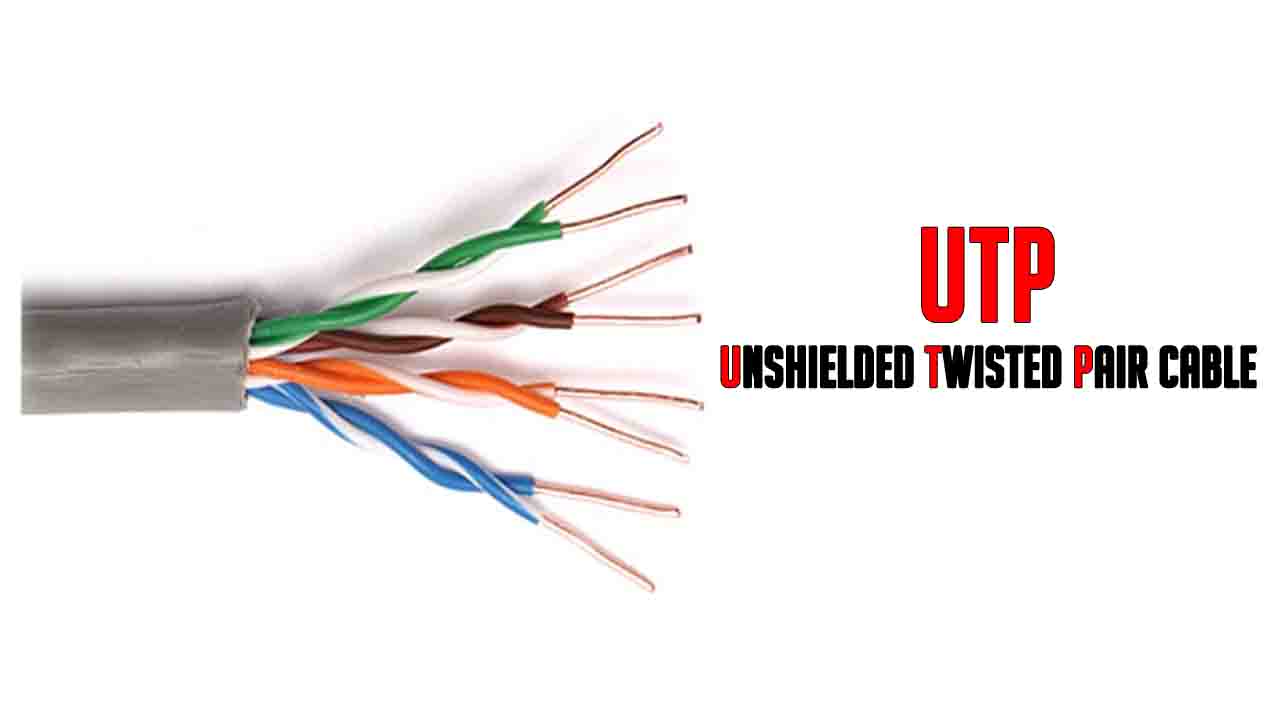
types of unshielded twisted pair cable Wiring Diagram and Schematics
Category 3 cable, commonly known as Cat 3 or station wire, and less commonly known as VG or voice-grade (as, for example, in 100BaseVG), is an unshielded twisted pair (UTP) cable used in telephone wiring. It is part of a family of standards defined jointly by the Electronic Industries Alliance (EIA) and the Telecommunications Industry Association (TIA) and published in TIA/EIA-568-B.

Kabel Jaringan UTP, FTP, STP, dan Fiber Optic
Unshielded Twisted Pair Cable: Unshielded twisted pair (UTP) cables are widely used in the computer and telecommunications industry as Ethernet cables and telephone wires. In an UTP cable, conductors which form a single circuit are twisted around each other in order to cancel out electromagnetic interference (EMI) from external sources..

How To Wire Arrangement UTP Cable
Ethernet Cable Instructions: Pull the cable off the reel to the desired length and cut. If you are pulling cables through holes, its easier to attach the RJ-45 plugs after the cable is pulled. The total length of wire segments between a PC and a hub or between two PC's cannot exceed 100 Meters (328 feet) for 100BASE-TX and 300 Meters for 10BASE-T.
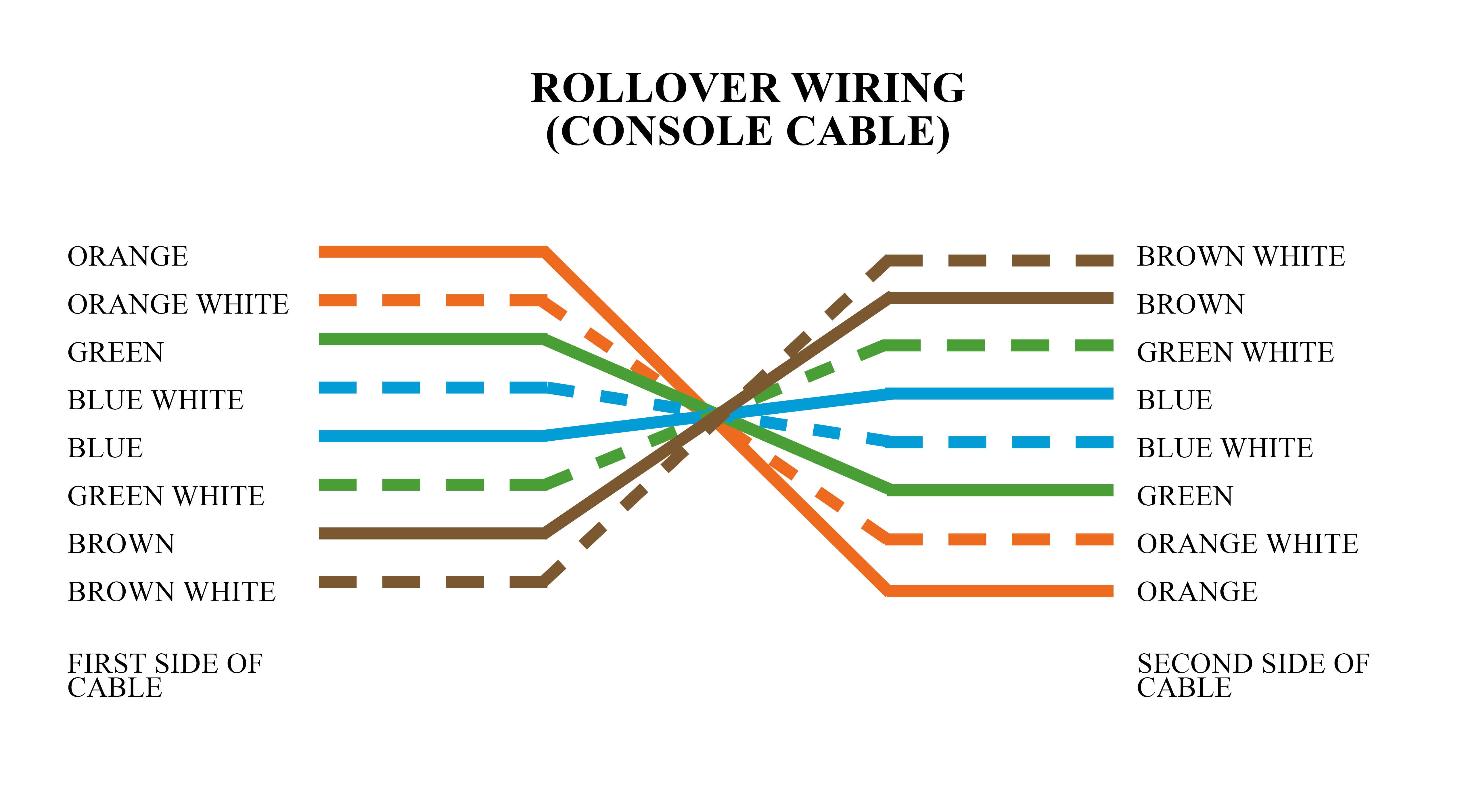
COMPUTER NETWORK Straightthrough, Crossover, and Rollover Wiring
When we refer to a jack or patch panel's wiring connection, we refer to either the 568A or 568B wiring scheme. 568A and 568B wiring scheme define the pin-pair assignments for terminating UTP cable. These assignments define the pinout, or order of connections, for wires in 8P8C eight-pin modular connector plugs and sockets.

Utp Wiring Diagram
A standard UTP cable consists of a 100-ohm copper cable made with 2 - 1800 unshielded twisted pairs shielded by an outer jacket. As they have no metallic shield, the cable diameter is reduced but cannot avoid electrical interference. The twisting in these cables boosts immunity to EMI and electrical noise.

5 Example of STP and UTP cables. Download Scientific Diagram
Explanation A twisted pair can be used as a balanced line, which as part of a balanced circuit can greatly reduce the effect of noise currents induced on the line by coupling of electric or magnetic fields. The idea is that the currents induced in each of the two wires are very nearly equal.
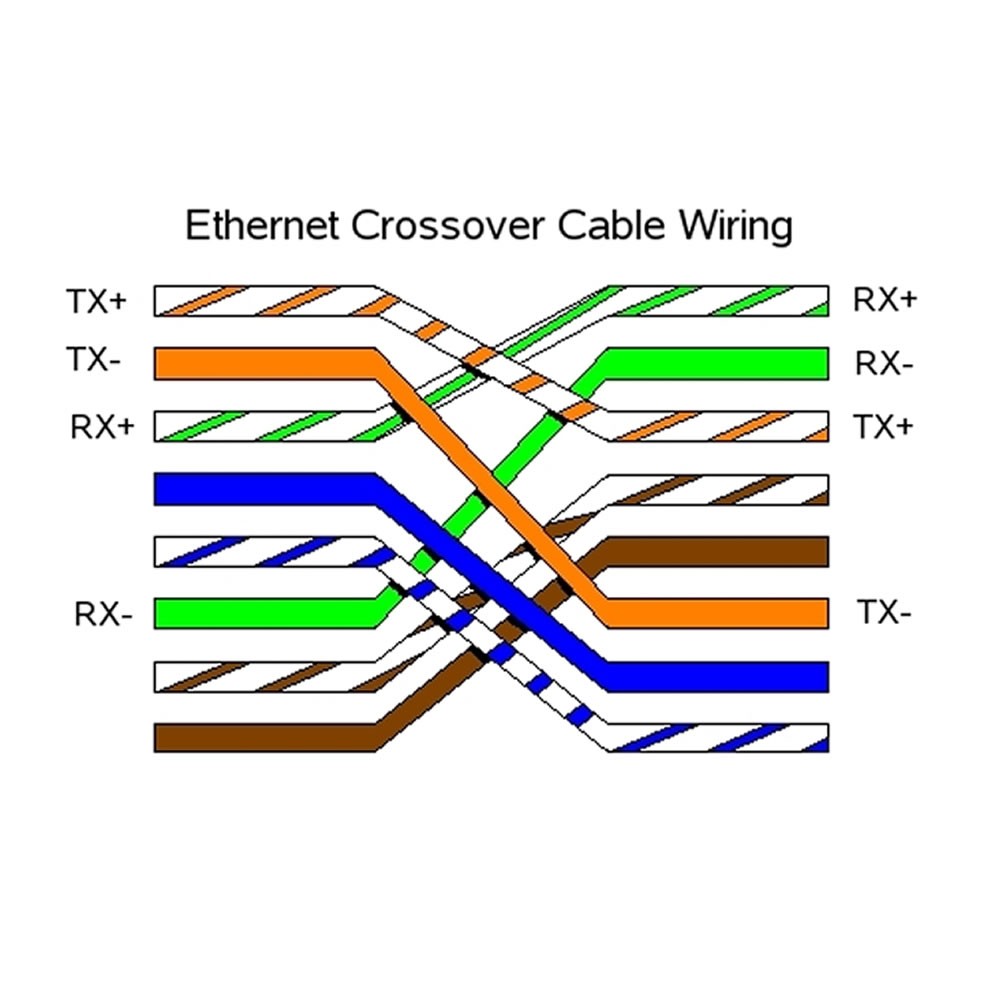
Network Crossover Cable Wiring Diagram / RJ45 Pinout / The crossover cable is
Essentially, the individual pairs of wires inside the cable are twisted and shielded to provide the best protection against cross-talk and electromagnetic interference. UTP. The more common kind of wire installed in a home is unshielded twisted pair. Unlike STP, FTP and S/FTP, UTP cables do not possess physical shielding to block interference.

utp cable Archives Fiber Optic Equipments
UTP cables aren't inadequate, however. Networking cable categories specify the way in which cables operate. For example, Cat5e, one of the most common types of twisted-pair cable wiring, specifies that data can transfer as far as 100 meters at speeds of up to 1 gigabit per second.
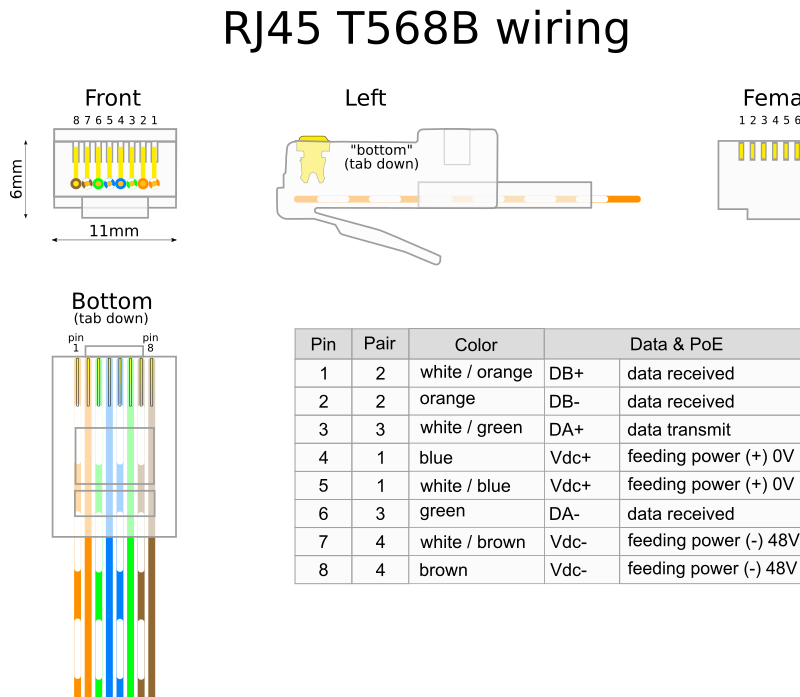
UTP Cat5E wiring Openclipart
UTP cables come in two main conductor types: solid and stranded. Solid Conductor: Solid conductor UTP cable consists of a single, solid copper conductor within each twisted pair, known for its stiffness. They are commonly used in permanent installations where the cable doesn't need to flex or bend frequently.
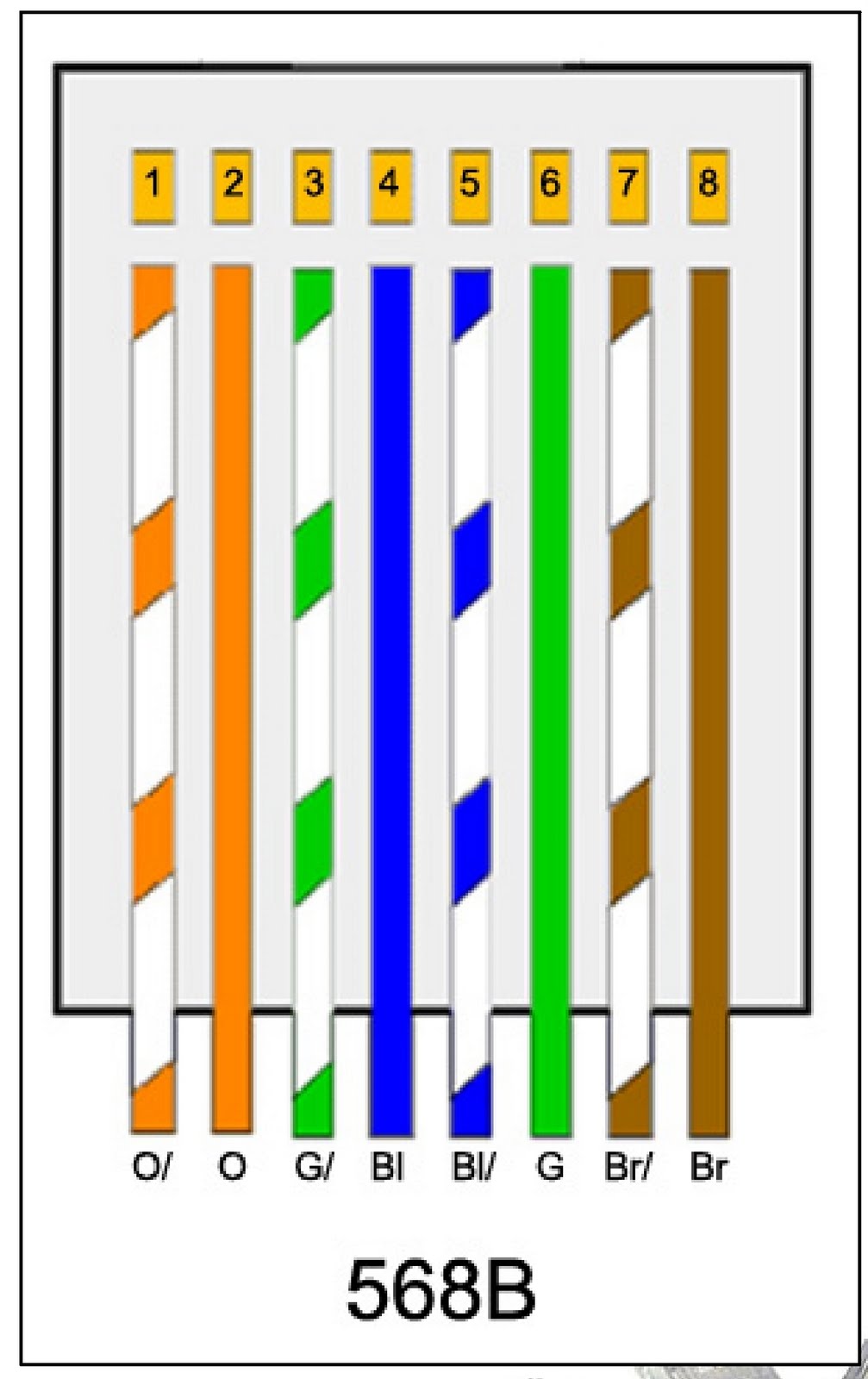
Standard Network Cable Wiring Diagram
UTP cable is used extensively in local area networks, or LANs. Origins of UTP Cable Alexander Graham Bell was the first person to make a UTP cable by simply twisting two wires together. The basic design has changed little since 1881, and is still a pair of single conductors wrapped around each other inside an insulated jacket.

568 B Wiring Diagram wiring, Cat6 cable, Computer projects
What is UTP Cable UTP Cable is a shorter way of saying unshielded twisted pair. This is one of the least expensive wires and works for basic needs of phone systems so it is one of the most commonly installed in residential industries. The twisted cable pairs work to cancel out EMI (electromagnetic interference) from external sources.